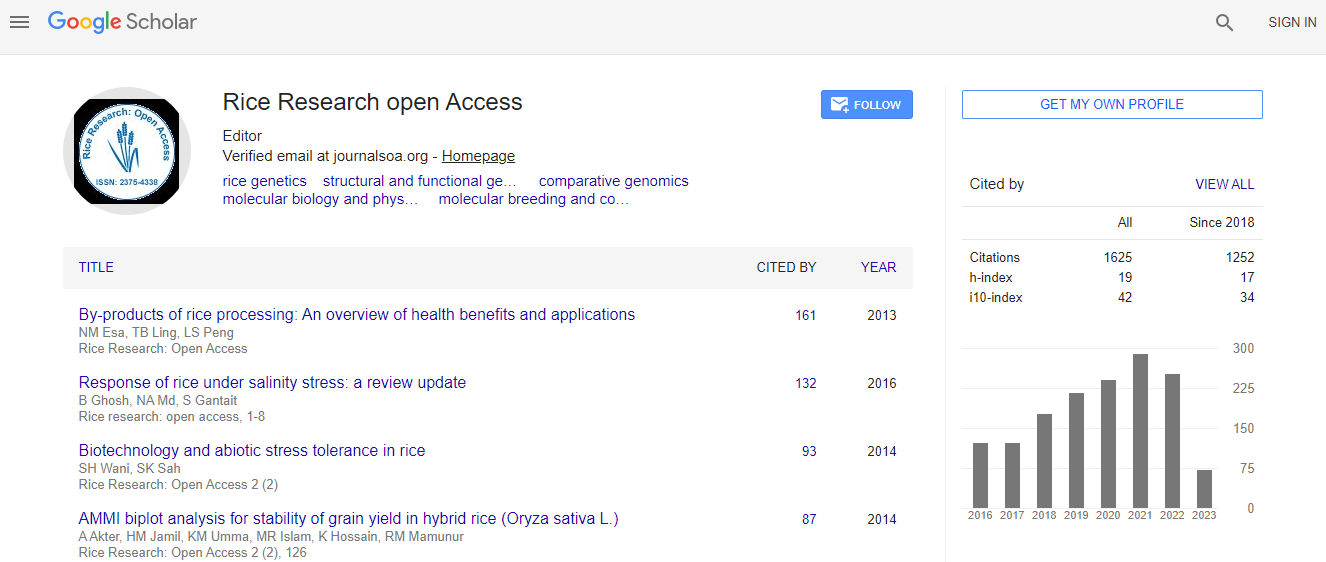Research Article
Genetic Transformation of Rice: Problems, Progress and Prospects
| Saroj Kumar Sah*, Amandeep Kaur, Gurwinder Kaur and Gurvinder Singh Cheema | ||
| School of Agricultural Biotechnology, Punjab Agricultural University, Ludhiana 141 004, Punjab, India | ||
| Corresponding Author : | Saroj Kumar Sah School of Agricultural Biotechnology Punjab Agricultural University Ludhiana 141 004, Punjab, India Tel: +91- 9779569724 E-mail: saroj-biotec@pau.edu |
|
| Received November 06, 2014; Accepted December 11, 2014; Published December 14, 2014 | ||
| Citation: Sah SK, Kaur A, Kaur G, Cheema GS (2014) Genetic Transformation of Rice: Problems, Progress and Prospects. J Rice Res 3:132. doi: 10.4172/2375-4338.1000132 | ||
| Copyright: ©2014 Sah SK, et al. This is an open-access article distributed under the terms of the Creative Commons Attribution License, which permits unrestricted use, distribution, and reproduction in any medium, provided the original author and source are credited. | ||
Related article at Pubmed Pubmed  |
||
Abstract
Plant genetic engineering has become one of the most important molecular tools in the modern molecular breeding of crops. Now a days, production of transgenic plants is a routine process in some crop species. Transgenes are delivered into plants to confer novel traits such as improving nutritional qualities, resistance to pests. It is possible to insert genes from plants at evolutionary distant from the host plant, as well as from fungi, viruses, bacteria and even animals. Genetic transformation requires penetration of the transgene through the plant cell wall, facilitated by biological or physical methods. Over the last few decades, a significant progress has been made in the development of new and efficient transformation methods. Despite a variety of available DNA delivery methods, Agrobacterium and Biolistic mediated transformation remain two predominantly applied approaches. The objective of this article is to review the currently used methods for genetic plant transformation, their biological requirements and critical parameters

